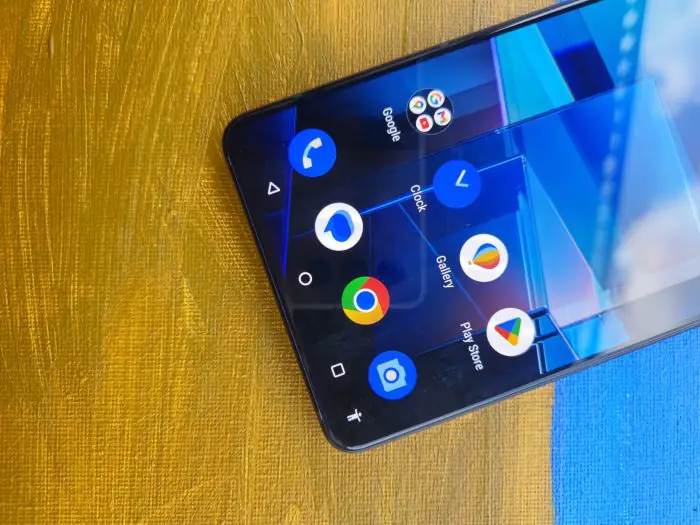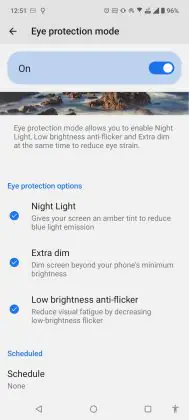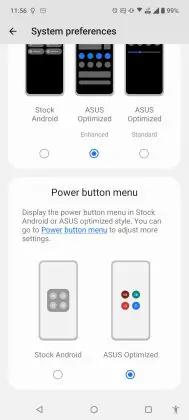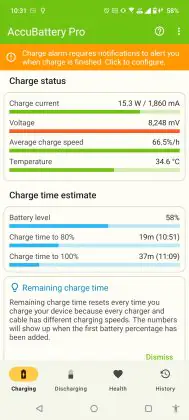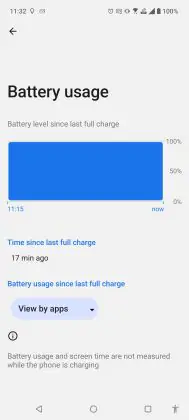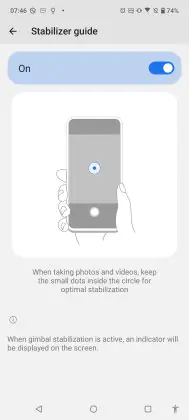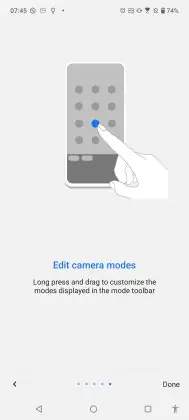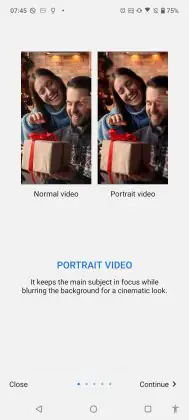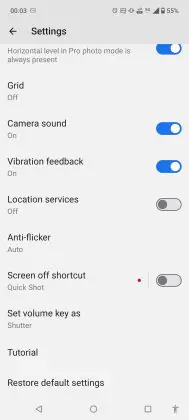© ROOT-NATION.com - Use of content is permitted with a backlink.
Every electronics manufacturer tries to stand out in the market with unique products. While ASUS is primarily known for its computers and components, it has also been successfully producing smartphones for ten years. With varying degrees of success. This year, the gaming-oriented ROG Phone 8 Pro has pleasantly surprised us! The new ASUS Zenfone 11 Ultra is very similar to it. It’s so good that I’m even finding it hard to part with this phone.

When I hear “ASUS,” I immediately think of laptops, computers, and various components from that world. ASUS phones are new to me since I haven’t had much exposure to Taiwanese mobile products until now. I’m starting my exploration with a model that aims to compete with top devices from other manufacturers. To test the smartphone more thoroughly, I allowed myself a longer testing period (I hope ASUS won’t be upset with me for that).
Read also: ASUS Zenfone 10 review: a compact flagship is relevant
Positioning and price
The ASUS Zenfone 11 Ultra is a new flagship on the market, available in two memory options: 16/512 GB and 12/256 GB. Pricing starts at $925 / €852. Interestingly, ASUS has moved away from creating compact flagships, which they were known for in recent years. The Zenfone 8, 9, and 10 models, though niche, were popular for their convenient size and top-notch technical specs. The Zenfone 11 Ultra represents a complete turnaround—it’s just as large as other flagship devices. The lack of a “compact” version has disappointed many brand enthusiasts, but for me, as a neutral observer, it’s a perfect opportunity to get to know the new device up close.

ASUS Zenfone 11 Ultra Specifications
- Operating system: Android 14
- Display: AMOLED 6.78″ Full HD+, LTPO 1-120 Hz (144 Hz in games only), peak brightness 2500 nits, Victus 2
- Processor: octa-core Qualcomm Snapdragon 8 Gen 3 with Adreno 750
- RAM: 12/16 GB (LPDDR5X)
- Permanent memory: 256/512 GB (UFS 4.0)
- Audio: 2 stereo speakers
- Connectivity: Wi-Fi 7, Bluetooth 5.4
- Security: face recognition, fingerprint scanner
- Additional: 3.5 mm audio jack, USB-C, Dual Sim, 5G
- Battery: 5500 mAh, 65 W charging
- Cameras:
- main camera 50 megapixels f/1.9
- ultra-wide-angle module 13 megapixels f/2.2
- 32 megapixel f/2.4 telephoto with OIS (3x optical zoom)
- front camera 32 megapixels
- Dimensions: 163.8 × 76.8 × 8.9 mm
- Weight: 224 g
Appearance of ASUS Zenfone 11 Ultra
They say there’s no need to dwell on personal tastes. I completely agree, and that’s how I approached evaluating the design of this smartphone. When you hold the 11 Ultra in your hands, you get the sense that you’re dealing with a premium product. The design of the smartphone isn’t particularly surprising, but it feels “luxurious.” This doesn’t concern me much because, for me personally, what the smartphone can do is more important than how it looks.
 The device is large, as the manufacturer has opted for a 7-inch display (6.78 inches), which is a significant increase compared to its predecessor, the Zenfone 10 (5.9 inches, by the way). The screen and back cover are made of Gorilla Glass Victus 2, which should add to its durability. However, it’s best not to test its endurance (and not just this, by the way, if you don’t have spare money for repairs). There’s a small cutout on the display for the selfie camera. To be fair, the manufacturer is no different from competitors in this regard.
The device is large, as the manufacturer has opted for a 7-inch display (6.78 inches), which is a significant increase compared to its predecessor, the Zenfone 10 (5.9 inches, by the way). The screen and back cover are made of Gorilla Glass Victus 2, which should add to its durability. However, it’s best not to test its endurance (and not just this, by the way, if you don’t have spare money for repairs). There’s a small cutout on the display for the selfie camera. To be fair, the manufacturer is no different from competitors in this regard.
Changes, quite noticeable, can be found on the back cover. In the upper left corner, there’s a square island—similar to the ROG Phone 8. Its shape and placement are quite unusual. For me, this isn’t a problem, especially since when you put on the included case, the phone looks quite classic and doesn’t stand out compared to competitors. The glass back panel features lines that resemble blocks (nothing to do with geometric shapes). It’s hard to say what the designer had in mind, but as I mentioned, I won’t discuss personal tastes since everyone has their own preferences.
On the right side of the phone, you’ll find the volume and power buttons. The USB-C 2.0 port is located at the bottom left (not in the center), along with the SIM card tray, speaker grille, and an additional port, which is a nice touch. Personally, I found the placement of the charging port in this segment interesting. It’s positioned a bit unusually. I don’t consider this a plus or a minus.
The smartphone is indeed well-crafted. Everything fits together perfectly, it has an IP68 certification (full dust and water protection), and Gorilla Glass Victus 2 on the front panel. The materials used (glass back, aluminum frame) give the impression that, despite the lack of a wow factor in terms of appearance, it is indeed a high-quality premium phone. In designing this phone, ASUS chose to add a slight rounding of the edges from the glass front and back panels to the frame. In my opinion, the device sits securely in the hand, with no fear of it slipping. Although opinions may vary (as pointed out by a friend), once you put on the case (which most users will), you’ll end up with a phone you won’t want to put down. Why? Stay tuned for the next part of the review to find out.

Read also: ASUS ROG Cetra True Wireless SpeedNova Gaming TWS Earbuds Review
Package contents
There’s nothing much to dwell on in this section. The manufacturer has included just a USB-C cable, a plastic case, a SIM card ejector tool, and some documents. Unfortunately, there’s no charger included, which is becoming increasingly common these days. In my view, this is not something to be proud of. The absence of a charger is a trend I completely fail to understand.
It’s clear that this is the manufacturer’s fault, not the device itself. With various 55W or 33W chargers on hand, I managed (the model supports 65W, but I used what I had). This leads me to a question: if ASUS doesn’t include a charger in the package, does the manufacturer have the right to reject a complaint by claiming that the customer is using a non-original charger from another manufacturer? In my opinion, no, because the manufacturer did not include this accessory with the device and did not require each user to purchase an ASUS charger separately.
ASUS Zenfone 11 Ultra Display
As expected from an AMOLED screen, there’s little to complain about. In my view, the display not only looks great but is also sharp and readable. It handles sunny days well and displays truly pleasant colors. The 6.78-inch screen has a resolution of 1080 x 2400 pixels, providing a pixel density of around 388 PPI, which results in a quite detailed and crisp image. It also features LTPO (with a minimum refresh rate of 1 Hz). ASUS wouldn’t be itself without indulging in a maximum refresh rate of 144 Hz, but only in gaming mode (in regular mode, you get 120 Hz). I must admit, this is a nice addition.
Of course, the advanced display settings offer a lot of options. Among other things, you can find eye protection modes, color modes, color temperature adjustment options, and more. I’d be surprised if the manufacturer didn’t have features to assist users with daily smartphone use. In addition to these extras, the device includes Always-On, Lift to check phone (which wakes up the phone when you pick it up), Night Light, and Smart Screen (which keeps the screen awake while you’re looking at it). In my opinion, there are so many features that you’ll probably end up using just one of them. I was particularly interested in the Always-On feature, which is essentially the Always-On Display familiar from other manufacturers. The manufacturer chose not to use that name (perhaps it’s patented), so they called their solution Always-On Panel.
There are indeed many functions and features, which we covered in detail in our ROG Phone 8 review. I’m convinced that more than half of them won’t be needed by most users, and you probably won’t search for them. Unfortunately, few people use all the capabilities of smartphones to their full extent. Often, we either don’t have the time for it or simply don’t want to explore them.
What I particularly liked is the screen lighting option. Remember when smartphones had LEDs that blinked when you had unread notifications? With the shift to bezel-less displays, this feature disappeared. However, the AMOLED screen now allows you to light up a specific part, in this case, an icon in the upper left corner. It can glow during charging or when notifications come in. Users can customize the icon’s color, style, and intensity of the lighting. It’s incredible!

Read also: ASUS ROG Zephyrus G16 2024 (GU605MI-QR064W) Gaming Laptop Review
Software
The Taiwanese smartphone is indeed an intriguing device. Another interesting aspect here is the software. ASUS has made an effort to accommodate users’ preferences. When you turn on the Zenfone 11 Ultra, you have the choice between a pure version of Android 14 and an ASUS-optimized version. I appreciate such initiatives! By the way, our editor Olga was so impressed with ASUS software that she wrote an extensive review of the ROG Phone 8. In many ways, the Zenfone is similar to the gaming model, except for the detailed gaming customization.
The software here is indeed intuitive. The presence of various features (some of which we probably know from other smartphones) makes the device convenient for daily use. Among the most interesting are: smart key, mobile manager, dual apps, game genie, and edge tool (a feature quite similar to Samsung phones, though with a strange name). It’s nice to see that the manufacturer has developed support tools for the software.
The aforementioned solutions are actually just small details. ASUS, following the trend, couldn’t resist integrating AI-based solutions. In my opinion, this is a significant direction for the entire mobile market. However, I’m convinced that most consumers won’t use half of these features, such as the edge tool (strange name). The ASUS Zenfone 11 Ultra seems to have new AI capabilities, but I couldn’t pinpoint them exactly. It looks like, over time, the manufacturer will diversify the device, and the features will be fully ready.
Are you familiar with the AI noise cancellation feature? It allows the system to learn from our habits during daily smartphone use. It’s not anything groundbreaking, as it’s a standard feature for AI-enabled smartphones, but it’s nice to have. Another feature that’s unfortunately not yet available on the device (we’ll have to wait for an update) is real-time call translation. This isn’t surprising to me, as it’s likely one of the most frequently used features. In my opinion, the manufacturer should release a major update to introduce more advanced AI technologies.
The phone also comes with Game Genie software, familiar from the ASUS ROG Phone 8. You can access the menu by swiping diagonally from one of the upper corners of the screen to the center while gaming. With Game Genie, you can switch between performance modes: High Performance, Dynamic, Durable, and Ultra Durable. You can also view real-time statistics, such as CPU speed, temperature, frame rate, and more.

There’s just one small issue. The manufacturer has only planned for two major updates. Not great, ASUS. I hope you’ll reconsider this stance, as the smartphone has a lot of potential.
Read also: ASUS ZenBeam L2 Portable Projector Review
Performance
I have to admit, I’m really impressed with the amount of RAM. The manufacturer has equipped the device with a full 16 GB. That’s not a small amount, and combined with the Qualcomm Snapdragon 8 Gen 3 processor (1×Cortex-X3 3.2 GHz, 2×Cortex-A715 2.8 GHz, 2×Cortex-A710 2.8 GHz, and 3×Cortex-A510 2.0 GHz) and Adreno 740 GPU, it performs really well. You can use the device smoothly without worrying about system lag. ASUS has made significant progress in customer service, which is one of the strongest advantages of this device. In my opinion, the Taiwanese company has shown that a phone doesn’t need to be outrageously expensive to have features like 16 GB of RAM. Take a look at your smartphones and decide for yourself: is 16 GB a lot or a little?

Additionally, there’s 512 GB of internal storage. Personally, I find this amount of storage more than sufficient, and I’m satisfied with the device. There have been instances when it heated up significantly under heavy load, but I’m willing to defend ASUS on this point. Why? In my daily life, I use a Samsung Galaxy Fold 5, which can also get quite warm—sometimes quite a lot. This is a natural occurrence.
Battery life
ASUS has pleasantly surprised me again. The Zenfone 11 Ultra comes with a sizeable 5500 mAh battery. Why this choice? If competitors offer only 12 GB of RAM and 5000 mAh in their flagships, ASUS needed to stand out. ASUS has done very well in the charging department (I can overlook the lack of a charger). The battery performance is similarly impressive. There were times when I used the phone all day and found it very difficult to drain it to zero. Typically, the charge dropped to 20-30% with very intensive use, like 8 hours of viewing content.
It’s worth noting that a person’s life doesn’t revolve around their phone alone. The device easily lasts up to 3 days with regular use, messages, and calls. However, when it comes to more intensive use or entertainment, the battery won’t drain quickly.
The manufacturer has also equipped the device with features to assist in daily use. Among these is the adaptive battery, which learns our charging habits. Additionally, there are various charging modes. ASUS takes care of the battery’s health, ensuring that it won’t wear out quickly.
Read also: ASUS VU249CFE-B Monitor Review
ASUS Zenfone 11 Ultra Cameras
Mobile photography is a crucial area for any smartphone owner these days. Previously, Zenfones were small, nimble, and powerful, but they didn’t stand out much for their cameras. Has anything changed?

The Zenfone 11 Ultra features a 50 MP main camera with OIS, a 32 MP 3x telephoto lens with OIS, and a 13 MP ultra-wide camera—seemingly a complete set. However, let’s take a closer look at the detailed specifications, which will soon be put into practice.
- Wide-angle (main): 50 megapixels Sony IMX890 f/1.9, 24 mm, 1/1.56″, 1.0 μm, PDAF, gimbal-OIS (6-axis gimbala 3.0 hybrid stabilizer); 8K@24 fps, 2160p@30 fps
- Ultra-wide-angle: 13 megapixel OmniVision ov13b, f/2.2, 13 mm, 1/3″, 1.12 μm; 2160p@30fps
- Telephoto lens: 32 megapixel OmniVision ov32c, f/2.4, 1/3.2″, 0.7 μm, PDAF, OIS; 1080p@60fps
- Front camera: 32 megapixel OmniVision ov8856, f/2.0, 22 mm, 1/4″, 1.12 μm; 1080p@30 fps
I must say, I really like the app interface. It’s completely understandable to me. However, I’m confident that more than half of the smartphone’s photographic capabilities will likely go unused. Why? Most photos will be taken in automatic mode. Users won’t have to search for how to take specific types of photos. Recently, I read a study showing that people mostly use the camera for selfies, portrait mode, and the main camera, with the occasional use of the ultra-wide mode.
The inclusion of a level meter in the center of the frame is a nice touch. Along with that, the settings for white balance, exposure compensation, ISO, shutter speed, and manual focus are available. While many of these options are hidden in the automatic mode, the Pro mode provides everything needed for professional use. I recommend exploring these settings, as there’s a lot to choose from and it can enhance your photography experience significantly.
The main camera of the Zenfone 11 Ultra captures photos with a resolution of about 12.5 MP. The images are decent and meet the standard. The detail is good, and the colors are pleasant and natural. I noticed that the ASUS Zenfone 11 Ultra captures photos realistically. In other words, there’s no artificial color enhancement. What you see is what you get through the lens.
Let’s turn to the other camera features. In my opinion, the image sharpness is a bit aggressive and leaves behind a lot of artifacts. However, this isn’t noticeable to the naked eye unless you’re closely examining the photo for fine details in close-ups. I also believe that someone unfamiliar with photography would likely not distinguish such details. The main lens can be used for shooting at full 50 MP resolution, but don’t expect high detail. The photos are pleasing, but some noise and artifacts can appear. Still, it’s not a major issue. The contrast and dynamic range in 50 MP shots could also be improved.
The camera interface on the Zenfone 11 Ultra offers quick switching between 10x and 30x zoom. Depending on which zoom level you want to use, you can adjust it using the slider by scrolling the display back or forward. Every smartphone benefits from good lighting; the more light available, the better the photos will be. This is exactly the case here. ASUS also employs a significant amount of light for an interesting feature called Hyper Clarity. This special solution helps with zooming.
The zoom quality is overall very good. The best results are with 2x to 3x zoom, but even beyond that, the quality remains decent. It may not match the Galaxy S24 Ultra, but it’s clear that the AI processing is doing its job. Here are a few examples:
It’s worth noting that the 32 MP telephoto lens on the Zenfone 11 Ultra offers 3x optical zoom (which means 2x zoom is a “crop” from the main camera, while 3x is true telephoto with better quality). The photos look good and match the colors from the main camera. Unfortunately, there are some slight noise and sharpness artifacts in the shots, though nothing too serious.
The main camera of the Zenfone 11 Ultra performs exceptionally well in low light conditions: there are many details in the shot, the processing is subtle, and noise is almost nonexistent. Colors look great, and the dynamic range is quite broad. Light sources are well controlled. Overall, I have no complaints. Taking photos in the dark does take a bit of time—you need to hold the phone steady for about 3 seconds (and even longer if the lighting is very poor).
The ultra-wide lens (13 MP) is quite impressive. Detail, contrast, and dynamic range are excellent for an ultra-wide camera. Occasionally, the lens tends to produce slightly lower exposure compared to the other two cameras, resulting in darker images and colors. However, this isn’t a major issue, as the lens performs very well overall. Examples:
Regarding the front camera (selfie), here’s the situation: it’s not a disaster, but performance heavily depends on the lighting. In good lighting, the photos turn out decent, but evening shots are hit or miss. The lens definitely struggles with low-light selfies. During the day, skin tones look natural, neither overexposed nor underexposed. However, in the evening, this becomes problematic. I wasn’t surprised by this, as not every smartphone excels at low-light photography. The downside to evening selfies is the longer exposure time, which means you need to hold the device still after taking the shot for it to capture and process the image.
The Zenfone 11 Ultra can record video in up to 8K@24fps with its main camera. The ultra-wide lens is limited to 4K@30fps, while the telephoto lens supports 1080p@60fps, and the front camera can record in 1080p@30fps. Additionally, the manufacturer offers two types of image stabilization: Adaptive and HyperSteady. The Adaptive stabilization allows for free recording at 4K and 60fps, while HyperSteady supports up to FHD and 60fps.
In my opinion, these two image stabilization options set the smartphone apart from its competitors. Each works effectively in its own way. The videos turn out well, making the smartphone a great choice for travel. After all, as they say: the best camera is the one you have with you.

Read also: ASUS Zenbook DUO (2024) UX8406 Review: Two Displays – Double Pleasure
Speakers and communication tools
The smartphone features two stereo speakers, and the sound quality is quite decent. It’s not Bang & Olufsen, but remember, this is a smartphone. If you’re looking for professional audio equipment, you might want to look elsewhere. Nowadays, we often use headphones, and personally, I rarely listen to music at full volume. The ASUS Zenfone 11 Ultra’s speakers provide optimal volume thanks to Dbass technology. Nevertheless, DIRAC’s audio experts have done their best to ensure greater sound clarity. There’s also a sound settings master that allows you to easily customize individual parameters.
All connectivity modules work flawlessly. Wi-Fi and Bluetooth connections are reliable and trouble-free. The fingerprint scanner is a true marvel; it operates seamlessly and very quickly. I haven’t encountered any situations where the device let me down. For many people, this is a very important feature, and I’m no exception. I appreciate the quick unlocking of smartphones without having to wait long.
Conclusions
Despite extensive testing, I have very mixed feelings about this smartphone. It was hard to find flaws that would disqualify this device as a potential purchase. I can’t fault the battery, display, performance, or software. I appreciate that at a price starting from $977 / €894, the ASUS Zenfone 11 Ultra comes with 16 GB of RAM (the 12/256 GB version starts at $925 / €852). Few competitors can offer such performance for this price.

Yes, during very intensive use, the processor can cause the ASUS to heat up. Let those who don’t suffer from this issue cast the first stone. Heating is a natural phenomenon, and it’s hard to consider it a real drawback. The camera (30x zoom) was a bit disappointing, though not entirely, as overall the cameras on this device perform well.
ASUS should definitely address some issues. One of the biggest drawbacks is the short update period (only 2 years). To me, this approach from the manufacturer is completely baffling. It’s clear that the smartphone is really solid, and the shortcomings are generally systemic problems. AI also needs to be sped up in this aspect. This is the first smartphone that I find hard to criticize negatively. I always look for flaws that might derail a purchase, but I don’t see them here.
Read also:
- Samsung Galaxy S24 Ultra Review: Strengths of AI and a Flawed Zoom
- Motorola Razr 50 Review: IPX8 Rating and Huge External Display
- Škoda Octavia A8 Review: When You Get More Than You Expect
- Motorola Edge 50 Pro Review: Best in Segment



















